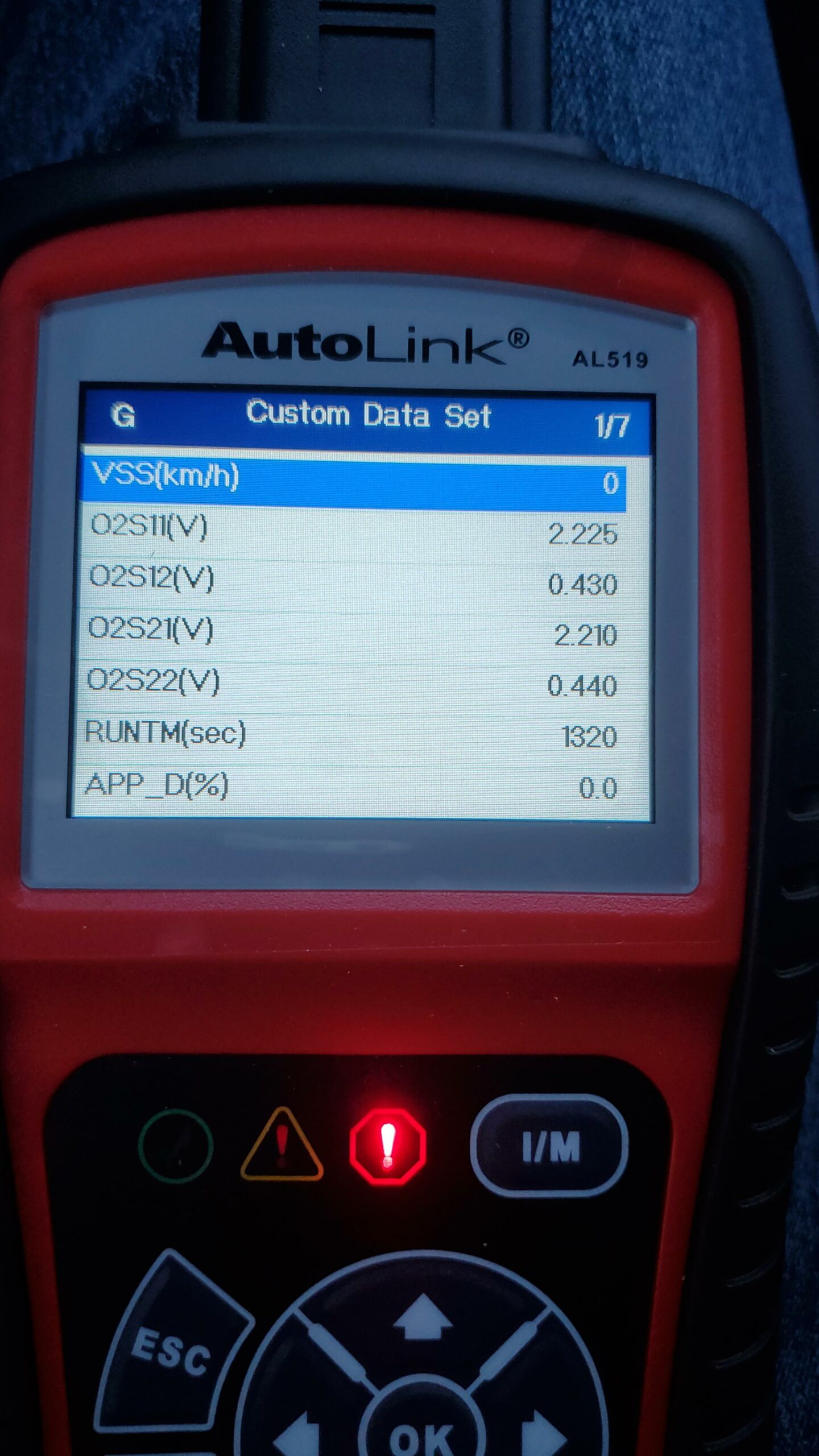Uh oh, that check engine light’s on, and you’ve pulled a P0430 code (Bank 2)? This usually suggests a problem with your catalytic converter’s efficiency, specifically on the side of the engine without cylinder #1. Before you envision a hefty repair bill, take a breath. This guide walks you through common causes and DIY diagnostics, potentially saving you a bundle. Grab your tools, and let’s get started!
Experiencing the dreaded P0430 code on your Chevy? Delve into the intricacies of this troublesome code and discover potential solutions with our comprehensive guide on P0430 Chevy.
Decoding the P0430: What’s Happening?
A P0430 code signifies “Catalyst System Efficiency Below Threshold (Bank 2).” This means the catalytic converter isn’t effectively scrubbing exhaust fumes. Think of it as a clogged filter—exhaust pollutants aren’t being neutralized properly. While you might not notice immediate driving issues, ignoring this code could lead to costly repairs down the line, including catalytic converter replacement, and potential emissions test failures.
Pinpointing the Problem: DIY Diagnostics
Identifying the root cause requires a systematic approach:
1. Confirm the Code & Check for Accomplices
Use your OBD-II scanner to verify the P0430 and check for other codes. Sometimes, related issues like engine misfires (which can damage the catalytic converter) trigger a P0430. Address those first.
2. Under the Car: Exhaust Leak Hunt
Inspect the exhaust system around Bank 2. Look for cracks, holes, or loose connections. Spray soapy water on the joints while the engine runs (carefully!). Bubbles suggest a leak.
3. Oxygen Sensor Check: The Informants
Oxygen sensors monitor exhaust gases. A faulty downstream sensor (Bank 2 Sensor 2, after the converter) can trick the computer into thinking the converter is failing. Use your OBD-II scanner to check its voltage readings. Erratic fluctuations might indicate a problem.
4. Catalytic Converter Inspection: The Prime Suspect
Visually inspect the converter for damage (rust, dents, cracks). A rattling sound when gently shaken suggests internal damage. Specialized tests, typically performed by mechanics, can definitively assess converter efficiency.
Fixing the P0430: DIY or Pro?
Some fixes are DIY-friendly; others require a professional touch:
Oxygen Sensor Replacement
Replacing an oxygen sensor is a fairly easy DIY job.
Exhaust Leak Repair
Minor leaks might be patchable with high-temperature sealant. More extensive damage may require welding or part replacement.
Catalytic Converter Replacement
This is the most expensive option, and usually a job for a professional.
Engine Tune-up
Addressing underlying engine problems (e.g., misfires) can prevent future catalytic converter issues.
Preventing Future P0430 Codes
Regular maintenance can help avoid a repeat performance:
- Address Engine Issues Promptly: Don’t ignore misfires or other performance problems.
- Use Quality Fuel: Cheap gas can contain contaminants that damage the catalytic converter.
| Fix | DIY Difficulty | Estimated Cost Range |
|---|---|---|
| Oxygen Sensor | Easy | $50 – $200 |
| Exhaust Leak Repair | Medium-Hard | $100 – $500+ |
| Catalytic Converter | Hard | $500 – $2000+ |
Ignoring a P0430 can lead to bigger problems. Address it promptly to prevent further damage and costly repairs.
Can a Bad O2 Sensor Cause a P0430 Code?
A P0430 code can be triggered by a bad downstream O2 sensor (Bank 2 Sensor 2), but it’s often a symptom, not the root cause. As Mechanic Andy from 1A Auto notes, a bad O2 sensor can cause a P0430, but issues like a leaky fuel injector might be the underlying culprit, damaging both the sensor and the catalytic converter. AutoZone states that in 99% of cases, O2 sensors are not the primary cause of P0420/P0430 codes. So, while replacing the sensor might temporarily clear the code, the real problem could persist.
Exploring Other Possibilities
Before replacing the converter, consider these:
- Exhaust Leaks: Leaks before the downstream sensor introduce fresh air, disrupting readings.
- Rich Fuel Mixture: Leaking injectors or a faulty fuel pressure regulator can overload the converter.
- Engine Misfires: Unburnt fuel damages the converter over time.
Diagnosing the True Culprit
- Check for Other Codes: Address related issues first (especially misfires).
- Inspect for Exhaust Leaks: Look for cracks, holes, or loose connections.
- Monitor O2 Sensor Data: Compare upstream and downstream readings using an OBD-II scanner. Consistent downstream readings similar to upstream readings often indicate a converter problem.
- Consult a Professional: If you’re unsure, a mechanic can perform advanced diagnostics.
Addressing a P0430 involves a systematic approach to identify the root cause, not just swapping parts.
Does P0430 Always Mean a New Catalytic Converter?
A P0430 code suggests a catalytic converter problem (Bank 2), but it doesn’t automatically mean replacement. As mentioned earlier, faulty O2 sensors, exhaust leaks, a rich fuel mixture, or engine misfires can also trigger this code. Proper diagnosis is crucial to avoid unnecessary expenses. Replacing the converter can be costly, while fixing a leak or sensor is significantly cheaper.
Diagnosing Before Replacing
Follow these steps:
- Confirm the Code: Verify the P0430 and look for other codes.
- Leak Check: Inspect the exhaust system for leaks.
- O2 Sensor Data: Monitor sensor readings with an OBD-II scanner. Compare upstream and downstream values.
- Professional Consultation: A mechanic can perform advanced tests if needed.
Preventive Measures & Long-Term Care
- Quality Fuel: Using top-tier gasoline minimizes contamination.
- Prompt Repairs: Address engine issues immediately to prevent further damage.
- Regular Maintenance: Keep up with scheduled maintenance to optimize engine performance and protect the catalytic converter.
By systematically investigating and addressing the root cause, you can effectively resolve the P0430 code and avoid unnecessary expenses. Don’t hesitate to seek professional help if needed.
- Unlock Filipino Culture: A Deep Dive into Traditions and Practices - April 23, 2025
- Unlock Spanish Culture: Insights & Opportunities Now - April 23, 2025
- White Spirit Uses & Substitutes: A Deep Dive for Pros & DIYers - April 23, 2025















